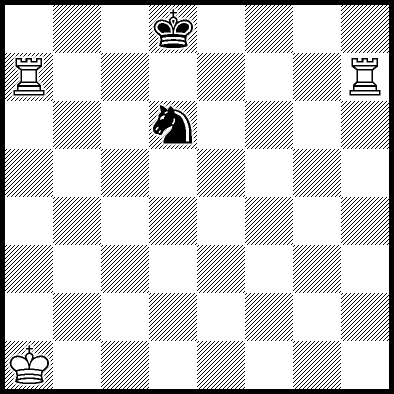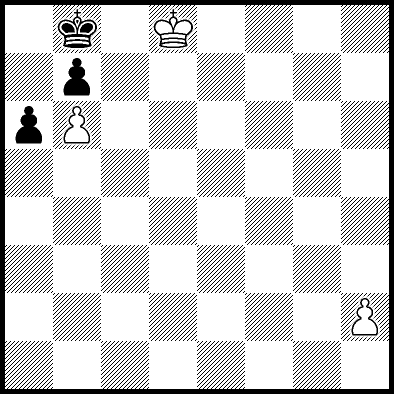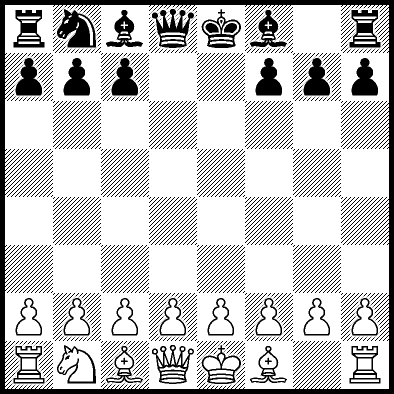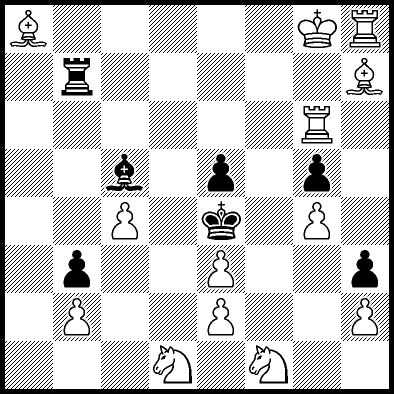
 |
| White to play and mate in 2 |
1. Rhg7 Nf7
2. Rg8#
Bonus Socius is the earliest known collection of chess problems, written in the 13th century by Nicolas de Nicolaï of Lombardy. The first move sets up a block, which means there is no immediate threat of mate but every Black move leads to disaster.
 |
| White to play and mate in 3 |
1. Nd5 Rc6
2. Rb6+ Rxb6
3. Nc7#
This one was composed while I should have been studying for my A Levels. I wanted to compose a problem with an ideal mate, which means that the checkmate position uses every piece on the board, and each square around the Black king is attacked only once.
 |
| White to play and win |
1. h4 a5
2. h5 a4
3. h6 a3
4. h7 a2
5. h8=Q a1=Q
6. Qg8 Qa2
7. Qe8 Qa4
8. Qe5+ Ka8
9. Qh8 and wins
This is a beautiful study, with much excitement contained in a dull looking starting position. If White tries 6. Qe8 straightaway, then Black can play 6. ... Qg7 sealing up the White king. If White instead tries 6. Qf8, then Black has 6. ... Qa3 followed by 7. ... Qd6+. In fact the solution given is the only possible winning line: a desirable quality of a study.
 |
| After Black's 4th move |
1. Nf3 e5
2. Nxe5 Ne7
3. Nxd7 Nc6
4. Nxb8 Nxb8
Construction tasks can sometimes be a bit dry, but in this case the composer plays a trick on us by switching the two Black knights. Note that there are three Black pieces missing, and so every White move except the first must be a capture. Noticing facts like this often helps to solve puzzles, whether chess related or not!
 |
| White to play and NOT mate in 1 |
1. Rc6+ Rxh7
Of course this is a joke, but observe even here the principle of economy at work: every piece on the board is necessary.